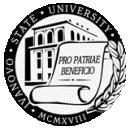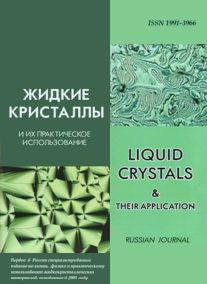|

|
Liquid Crystals and their Application
Russian Journal Zhidkie kristally i ikh prakticheskoe ispol'zovanie Жидкие кристаллы и их практическое использование |

|
|

|

|
|
|
Menu

|
|
|
|
|
Zhidk. krist. ikh prakt. ispol'z. = Liq. Cryst. and their Appl., 2014, 14 (1), 62—68. |

|
|
Aggregation Behavior of Binary Systems Based on Polyacrylic Acid and Cationic Surfactants: Effect of Head Group Structure and Hydrophobicity
|
E. A. Vasil'eva1,2, A. R. Ibragimova2, F. G. Valeeva2, S. S. Lukashenko2, L. Ya. Zakharova1,2
|
Author affiliations
1Kazan National Research Technological University,
Karl Marx str., 68, 420015 Kazan, Tatarstan. Russia
2A. E. Arbuzov Institute of Organic and Physical Chemistry RAS,
acad. Arbuzova str., 8, 420088 Kazan, Russia.
E-mail: lucia@iopc.ru
|
|
Abstract
Factors controlling the complexation of mono- and dicationic (gemini) surfactants with a weak polyelectro-lyte, polyacrylic acid (PAA) are elucidated. By the example of monocationic surfactants cetyltrimethylammonium bromide and 1-hexadecyl-4-aza-1-azoniabicyclo[2,2,2]octane bromide, the influence of the head group nature and solution pH on the interaction was shown; the quantitative parameters of aggregates were measured. The com-plexation of PAA with geminis is markedly influenced by the hydrophobicity of surfactants. A decrease in the alkyl chain length results in synergetic interactions of components, which is confirmed by the lower values of critical aggregation concentration.
Keywords: cationic and gemini surfactants, head group, hydrophobicity, polyacrylic acid, aggregation, zeta potential
|
|
|
|
|
|




